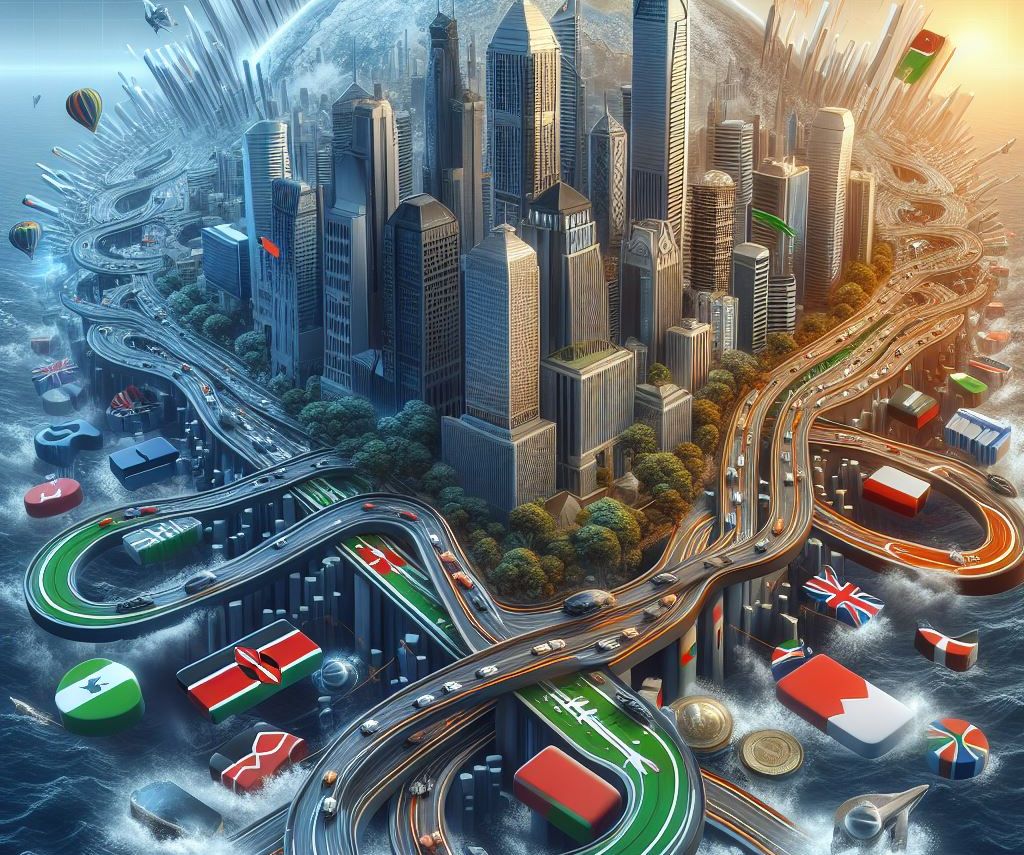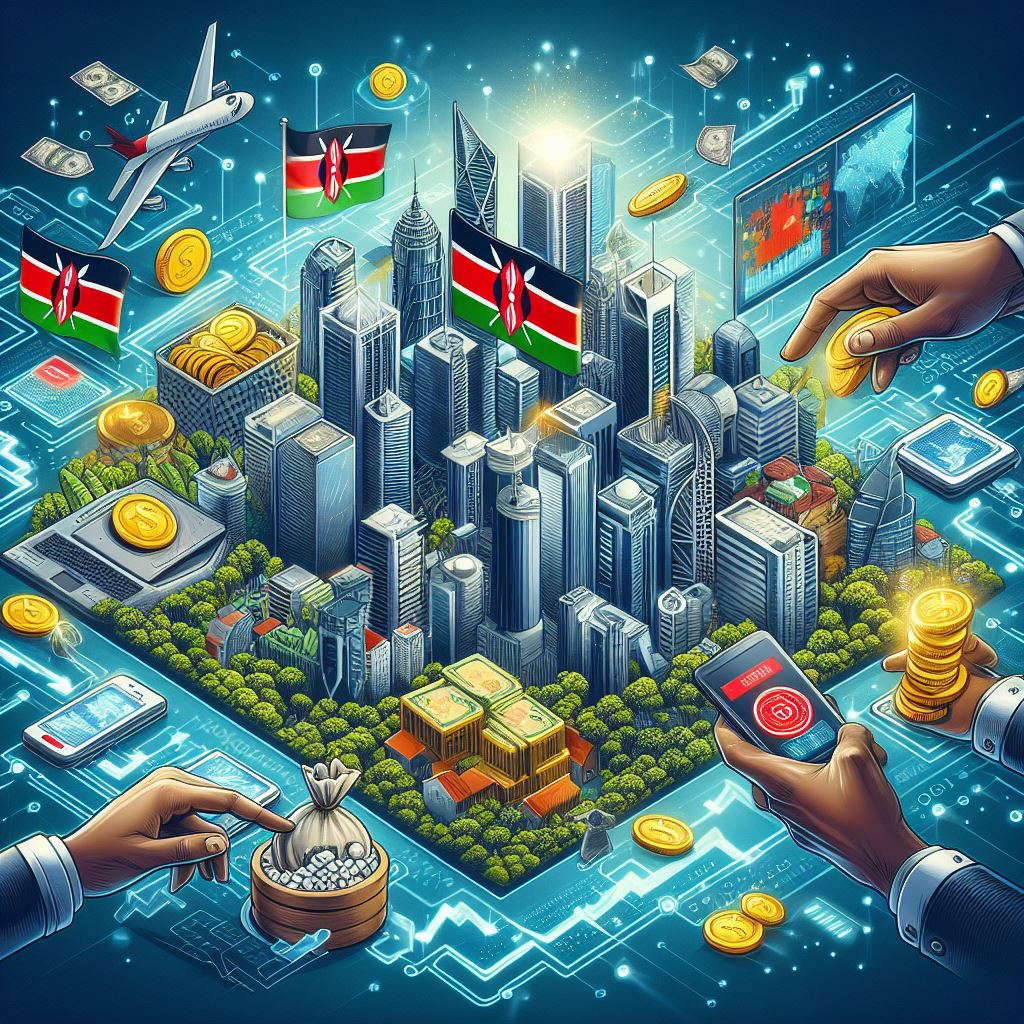Discover how rewilding, a groundbreaking ecological restoration strategy, combats climate change by revitalizing ecosystems and enhancing carbon sequestration. Explore the transformative power of biodiversity, keystone species, and nature-based solutions in mitigating environmental crises while promoting long-term resilience. Rewilding offers a vital pathway toward a sustainable, climate-resilient future.
Introduction
The relatively new way of preserving the environment is called rewilding, which aims at the reinhabiting of ecosystems with native species and letting nature take its course with minimal anthropogenic interference. Thus, rewilding has been postulated despite the increasing environmental challenges as a revolutionary technique that goes beyond traditional conservation frameworks. The world is currently suffering from climate change effects such as increase in global temperatures, loss of biodiversity among others hence the importance of having new approaches to cases of environmental degradation while at the same time encountering effective mechanisms for climate stabilization. Creating landscapes for viable ecological communities is not only an opportunity to compensate for the loss of species and diverse functioning of the biosphere; rewilding is one of the few tools to effectively remove and store carbon at a planetary scale.
Thus, rewilding plays the role of one of the most important stakeholders in combating climate change, which allows the ecosystems to neutralize the effect of excessive CO2 emissions, maintain water-related cycling processes, and improve the ability of systems to cope with severe weather conditions. In recent years, as people have walked with their eyes to 1,5 degrees Celsius the Earth warmed up The presented subject illustrated the aspirations of humanity and the outcomes of the attempts produced by individuals and communities the best way possible – through real-life examples. 5 degrees Celsius, the restoration of ecosystems is widely defined as the necessary addition to the use of renewable energy and technological development. This article goes further in depth on the topic of rewilding looking at how rewilding can form the basis of global climate initiatives with a revival of bio-diversity and balance.
1. Understanding Rewilding
The rationale of rewilding is in the idea that self-regulating systems in fact have a natural capacity to restore themselves. And it entails the re-establishment of keystone species, those organisms without which an ecosystem cannot sustain it self and the restoration of natural processes like predation, plant growth and animal movement. One widely cited instance is based on the recent experiment of the reintroduction of wolves to Yellowstone National Park during the 1990s; this produced a “cascade effect” by which increased hunting pressure by a top predator altered herbivore densities and allowed the rebuilding of the ecosystem on overgrazed sites. This led to the regeneration of forest lands, the solidification of river banks and quite an improvement in the variations in species.
For instance, rewilding schemes are no longer confined to the translocation of species but also range of return of ecosystems’ functions. In Europe there are more efforts of large scale rewilding to bring back large wild animals like bison and horse, which play the role of maintaining grasslands. These organisations show examples of how rewilding is not simply a preservation of particular species, but rather the attempt to reinstate all the processes that make up the healthy ecosystem able to withstand the conditions of the climate change.
2. The Role of Ecosystems in Climate Regulation
Ecosystems will play a major role in managing climate change in the earth. Forest, wetlands and grass lands, and all ocean currents also perform the function of carbon reservoirs thereby removing large amounts of carbon dioxide from the atmosphere and depositing it with plants, soil and sediments. For instance, sources such as Tropical rainforests which include the Amazon forest contain a massive amount of carbon but when deforestation and degradation of such forests occurs it allows the release of that carbon into the atmosphere thus worsening climate change. Wetland, another unnoticed carbon sink, is capable of holding massive quantities of carbon within its sodden soils while grassland and savannahs lodge carbon within its roots. Therefore, diverse, complex, and vigorous ecosystems are an essential tool in combating climate change; however, if they are degraded, destroyed, or over-used as here – broken into pieces, contaminated, or over-exploited in one or another way, they can no more serve as carbon ‘sinks. ’
Besides carbon storage, ecosystems control the amounts of water in the region and the globe and alter near and distant weather and climatic conditions and support and preserve species richness. For instance, forests and wetlands therefore control water flow preventing flood, stock water during dry seasons, and also regulate the climates within regions. Also, healthy ecosystems decrease the global temperature by mitigating the amount of solar energy absorbed and surface albedo. The loss of these ecosystems contributes not only carbon emissions into the environment but also reduce their potential to mitigate the worst impacts of climate change, which in turn, exacerbates more damage to the environment.
3. Rewilding and Carbon Sequestration
The idea of rewilding is a valuable prospect to increase the performance of c-stores by reinstating ecosystems that can benefit the process of carbon storage. In general, as species are restored in the ecosystems and in many landscapes, there is capability of sequestering substantial amounts of carbon. For instance, the elephants and bison that now only inhabit a few remote corners of the world play a critical role to preserve grass lands, which sequester far more carbon below the ground than the forests. Likewise, re-creation of peatlands restored carbon sequestration, with one of the planet’s richest carbon sources if adequately preserved. Despite it accounts only 3% of the entire global land area, peatlands contain more carbon than all the global forests. Some of the rewilding projects that are aimed at the most important bio-geographical regions can significantly affect the entire world carbon storage.
In addition, rewilding optimises ecosystem function across a broad range of taxa which brings a myriad of different species to bear on how carbon is stored. Recycling of apex predators, can for instance, lead to improved forest and grassland of which are more effective in capturing Carbon. Grazing by natural herbivores, distribution of seeds, and improvement in the soil nutrient status, rewilded places can further improve their carbon sequestration potential to be used as a nature based solution to climate change. Thus in the long term, rewilding is likely to approach not only the scale of corporate solutions, but to become an important tool for climate change control through carbon sequestration.
4. Biodiversity and Ecosystem Resilience
One of the main principles of the rewilding is improvement of bio-diversity and, thus, increasing the stability of local ecosystems. According to their nature, ecosystems come into existence through species diversity or the combination of numbers of species in an ecosystem which plays the central role for ecosystems to operate effectively and even change in light of things like climate change. It brings back natural processes of ecosystems including predation and seed dispersal which are crucial for existence of biological diversity. This is because more species mean that ecosystems are more resistant to various shocks such as droughts, floods and diseases which are believed to become more frequent as a result of climate change. When an ecosystem is diverse, there are multiple-steps to get the ecosystem to recover and become stable hence a sustainable ecosystem.
In addition, the restoration of the keystone species has been identified to play a large part in the process. For example the recolonization of beavers in certain areas of Europe has seen the formation of habitats for support of a number of species, avaried rise in water storage and decrease of flood impacts. Such naturally engineered ecosystems become significant profits for both the wildlife and humans in the time of climate change. By rewilding, thorough the improvement of ecosystems’ health, they are also less sensitive to climate change incidents while also being more productive to support the necessities of life such as clean air and water and food.
5. Challenges and Criticisms of Rewilding
Rewilding has been described by various challenges and criticisms as listed below. There is a general hitch with introducing megafauna initiatives to rewild large areas because these come into contact with agricultural, urban and industrial uses of the land. Regarding the return of large predators or large herbivores to densely populated areas, or areas that were once populated, conflicts arise because human beings assume that these animals are a threat to their lives and definitely their stock. However, rewilding requires governance of large tracks of land, presenting concerns relating to property rights particularly in areas that the indigenous or the locals depend on the land for their livelihood. Mitigating these concerns, however, needs more planning, constructive engagement of stakeholders, and formation of approaches that meet human need and also accommodate ecological regeneration.
Similar to this argument, concerns have also been raised as to whether rewilding may have some serious side effects especially where it involves transplanting some species into new ecosystems affected by anthropogenic impacts. There could also be undesirable side effects such as some totally different equilibrium disturbed like presence or arrival of invasive species or quality or frequency of some mega fauna increasing and rising human wildlife conflicts. Nevertheless, the advocates of rewilding insist on the fact that flexible decision-making, constant tracking of the outcomes, and stakeholders’ engagement can significantly reduce these threats. In addition, cultural practice consensus with Indigenous people concerning rewilding is an additional potentiality of rewilding than can be inclusive and sustainable in the long run.
Conclusion
The concept of rewilding as an idea and a method of nature restoration retains a great promise for resolving the two crippling global issues of disappearing species and climate change. Not only does rewilding have the potential to improve the varied habitats of the flora and fauna species but also it is a key phenomena that can help in combating climate change and potential withstanding of climate shocks. With increasing effects of climate change, there is a more compelling need to upscale cost-effective techniques for the restoration of damaged ecosystems with rewilding playing a critical role in the recovery of balance between man and nature.
Nonetheless, rewilding cannot operate in isolation but rather has to be integrated into climate plans and other issues related to the utilization of terrains. Therefore, people together with governments, NGOs, and communities should reconsider proper organization and overall strategy of rewilding flexible and viable in the context of environmental and social changes. If the global conservation and climate initiatives increase the rewilding rate we will have a prospect of the Earth where ecosystems gradually grow to balance and develop, and might serve as an important weapon against climate change.


























